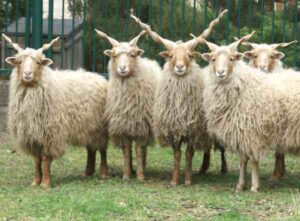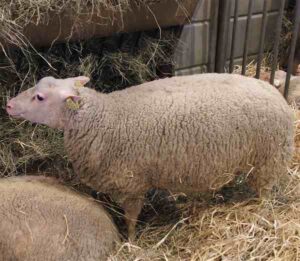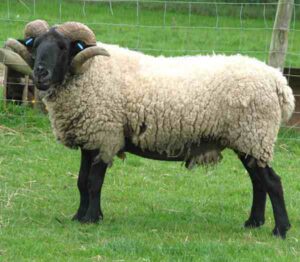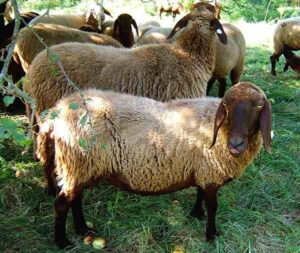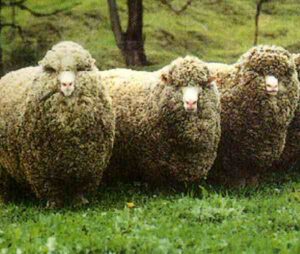The Cheviot sheep is a dual-purpose breed of domestic sheep which is valued for both meat and wool production. It was originated in the Cheviot Hills, on the border of England and Scotland.
And the breed gets it’s name from a range of hills in north Northumberland and the Scottish Borders. It is a very old breed and recognized as early as 1372.
Today the breed is still common in this area of the United Kingdom. But it is also found in north west Wales, Ireland, Scotland and the south west of England (especially Exmoor and Dartmoor).
Along with the availability in it’s native area, the breed is also rarely found in the United States, New Zealand and Australia.
The Cheviot sheep breed was introduced into the United States in 1838 from Scotland. Today the breed is raised as a dual-purpose animal. Read some more information about this sheep breed below.
Cheviot Sheep Characteristics
The Cheviot sheep are large sized animals. They have a distinctive white-face, and their head and legs are wool free. They have picked ears, black muzzle and black feet.
They are mainly white in color, and their wool is long. Both rams and ewes are generally polled.
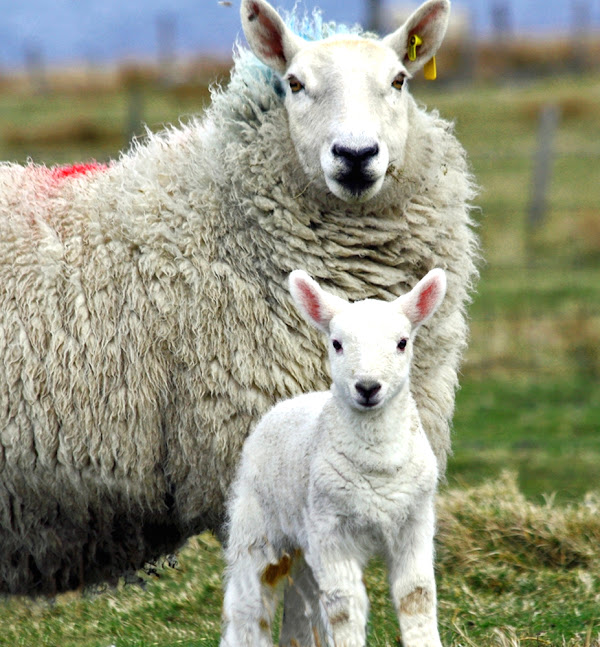
As a large animal, average live body weight of the mature Cheviot rams is between 72 and 90 kg. And the mature ewe’s average live body weight vary from 55 to 72 kg. Photo and info from ansi.okstate.edu and Wikipedia.
Uses
The Cheviot sheep is a dual-purpose animal. It is raised for both meat and wool production.
Special Notes
The Cheviot sheep are very hardy breed of domestic sheep. They can do well in the bleak, windswept conditions of England and Scotland. The lambs reach maturity faster and the ewes have developed good mothering instinct.
The breed also has proved it’s ability to withstand the cold, wet winters of Southern Australia, and it’s vigor in foraging through the hot, dry summers when feed is scarce.
The Cheviot sheep can look after themselves very well, and thus they need less caring. The ewes are excellent mothers and they have fewer lambing problems.
Hard black feet of these animals make them less prone to foot rot. They also have the tendency for worm resistance and they require less drenching, less crutching and suffer less fly strike.
Wool of the Cheviot sheep has a distinctive helical crimp, which gives it that highly desirable resilience. The wool is often blended into other yarns for giving resilience and durability to the finished article.
Their fleece is long-staple and dense and of 56’s to 50’s quality. The mature Cheviot ewes on average produce about 2.25 to 4.5 kg of fleece.
Along with wool production the Cheviot sheep are also very good for producing meat. The lambs grow relatively faster and very good for meat production. However, review full breed profile of the Cheviot sheep in the following chart.
| Breed Name | Cheviot |
| Other Names | None |
| Breed Purpose | Dual-purpose (meat and wool) |
| Special Notes | Very hardy animals, do very well in native climates, lambs grow and reach maturity faster, ewes have good mothering instincts, require less care and management, the ewes have less lambing problems, less prone to foot rot, require less drenching and less crutching, the ewes produce about 2.25 to 4.5 kg fleece, very good for meat production |
| Breed Size | Large |
| Weight | Mature ram’s live body weight is between 72 and 90 kg, and the mature ewe’s average live body weight vary from 55 to 72 kg |
| Horns | No |
| Climate Tolerance | Native climates |
| Color | Generally white |
| Rarity | Common |
| Country/Place of Origin | United Kingdom |

